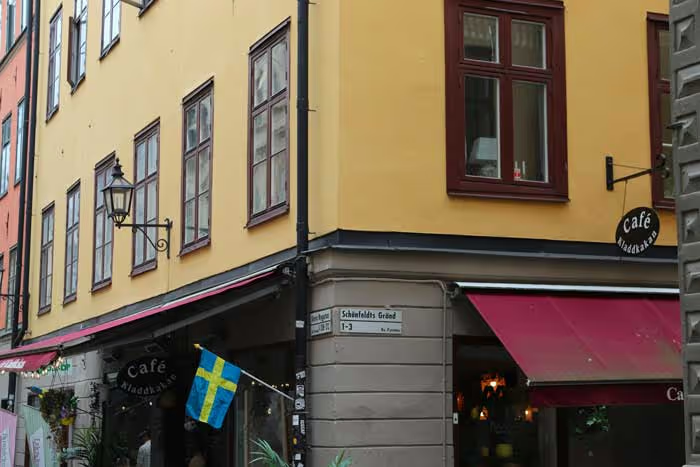När företaget växer håller inte Excel-ark och ad-hoc-rutiner längre. En skalbar ekonomifunktion ger kontroll, förutsägbarhet och färre brandkårsutryckningar. I den här artikeln går vi igenom hur du bygger en hållbar struktur – från attestflöden och rapportering till roller, ansvar och automatisering.
När Excel inte räcker längre
I början av ett företags resa fungerar det ofta utmärkt att sköta bokföring, löner och fakturor i enklare system. Men när organisationen växer – fler anställda, fler leverantörer, större kassaflöden – börjar de manuella rutinerna skapa problem.
Plötsligt blir vardagen fylld av sena attesteringar, missade betalningar och rapporter som kommer för sent för att användas i beslutsprocessen. Det är här behovet av en skalbar ekonomifunktion blir tydligt: en struktur som växer i takt med bolaget och minimerar handpåläggning.
Struktur i attest- och fakturaflöden
Grunden för en fungerande ekonomifunktion är ett tydligt och effektivt flöde för leverantörsfakturor och attest. Det ska vara lätt att förstå vem som ansvarar för vad – och om möjligt ske helt digitalt.
Så skapar du ordning i flödet
- Tydliga roller och beloppsgränser. Bestäm vilka personer som får attestera vad. Exempel: avdelningschefer upp till 50 000 kr, VD över 50 000 kr.
- Automatiserade flöden. Använd ett system där fakturor går automatiskt till rätt attestant baserat på leverantör, projekt eller kostnadsställe.
- Standardiserad kontering. Låt systemet föreslå konton och kostnadsställen baserat på tidigare fakturor – det sparar tid och minskar fel.
- Digital arkivering. Pappersfakturor hör inte hemma i en skalbar funktion. Alla underlag ska vara sökbara och revisionssäkra.
- Påminnelser och deadlines. Attestering ska inte bli en flaskhals. Automatiska påminnelser frigör tid för ekonomiavdelningen.
| Steg |
Ansvar |
Systemstöd |
| Fakturamottagning |
Ekonomiassistent |
Skannings- eller EDI-lösning |
| Granskning |
Projektledare / avdelningschef |
Automatiserad attestflödesmotor |
| Attest |
Budgetansvarig / VD |
Digital attest via app eller webblösning |
| Bokföring |
Redovisningskonsult |
Integrerat ekonomisystem (t.ex. Fortnox, Visma, PE Accounting) |
En tydlig struktur gör att attestflödet blir både spårbart och effektivt – vilket minskar risken för fel, dubbelbetalningar och oklara kostnadsansvar.
Roller och ansvar: ekonomiassistent, redovisningskonsult och CFO-stöd
I ett växande bolag behövs fler funktioner i ekonomiarbetet – men det betyder inte nödvändigtvis fler anställda. Ofta handlar det om att fördela ansvar och kompetens på rätt nivå.
Ekonomiassistenten – navet i vardagen
Ansvarar för löpande administration: fakturahantering, kundreskontra, leverantörsreskontra, löneunderlag och enklare bokföring. En ekonomiassistent ska arbeta nära verksamheten och säkerställa att alla underlag kommer in i tid.
Redovisningskonsulten – tryggheten i redovisningen
Har det övergripande ansvaret för kvaliteten i bokföringen. Säkerställer att alla rapporter följer regelverk och att bolaget uppfyller sina skyldigheter gentemot Skatteverket och Bolagsverket. Konsulten kan vara intern eller extern, men ska vara auktoriserad och arbeta i moderna system.
CFO-stöd eller deltidsekonomichef – strategin bakom siffrorna
När företaget växer behövs analys och strategi. CFO-stödet tolkar siffrorna, upprättar prognoser och utvecklar rapporteringen. I tillväxtbolag kan det handla om en deltidstjänst, ett ”CFO Light-upplägg”, som ger ledningen tillgång till ekonomisk styrning utan att behöva anställa på heltid.
| Roll |
Ansvarsområde |
Syfte |
| Ekonomiassistent |
Löpande bokföring, fakturor, löneunderlag |
Ordning och kontinuitet i ekonomiprocesserna |
| Redovisningskonsult |
Kvalitetssäkring, bokslut, moms, skatt |
Korrekt redovisning och myndighetsrapportering |
| CFO-stöd |
Analys, prognoser, rapportering |
Styrning, strategi och beslutsunderlag |
Ett vanligt misstag i tillväxtbolag är att låta en person göra allt. Det leder till flaskhalsar, stress och risker. En skalbar ekonomifunktion har alltid en tydlig rollfördelning och backup.
Rapportering varje månad – vad ska finnas med?
För att ledningen ska kunna fatta snabba och välgrundade beslut krävs regelbunden och standardiserad rapportering. Månadsrapporten är det centrala verktyget för att följa upp lönsamhet, kassaflöde och utveckling.
En bra månadsrapport innehåller:
- Resultaträkning med jämförelse mot budget och föregående period.
- Balansräkning som visar tillgångar, skulder och eget kapital.
- Kassaflödesanalys för att säkerställa likviditeten.
- Kommentarer och analys – vad förklarar avvikelserna?
- Prognos – uppdaterad helårsbedömning baserad på senaste utfall.
- Nyckeltal (KPI:er) för lönsamhet, soliditet, tillväxt, kundfordringar och personalomsättning.
| Rapportdel |
Syfte |
Frekvens |
| Resultaträkning |
Visar bolagets resultat för perioden |
Månadsvis |
| Balansräkning |
Visar tillgångar, skulder och eget kapital |
Månadsvis |
| Kassaflödesanalys |
Visar företagets likvida medel och rörelsekapital |
Månadsvis |
| Kommentarer |
Tydliggör orsaker till avvikelser och beslut |
Månadsvis |
När rapporten är standardiserad kan alla i ledningsgruppen förstå siffrorna – och använda dem som grund för handling. Det är den stora skillnaden mellan rapportering och styrning.
Automatisering – nyckeln till skalbarhet
En skalbar ekonomifunktion bygger på systemstöd och integrationer som minimerar manuell hantering. Automatisering frigör tid för analys och minskar risken för fel.
Här ger automatisering störst effekt
- Fakturahantering. Automatisk inläsning, tolkning och kontering av leverantörsfakturor.
- Bankintegration. Automatiskt matchade in- och utbetalningar i bokföringen.
- Lönesystem. Direktkoppling till Skatteverket, pensionsbolag och bokföring.
- Kvittorapportering. Digitala kvitton och attest via mobilapp.
- Rapportering. Dynamiska dashboards och realtidsdata till ledningen.
Automatisering är inte bara en kostnadsfråga – det handlar om riskminimering. Varje manuell process är en potentiell felkälla.
Ett bra riktmärke:
Om samma uppgift utförs mer än två gånger i månaden – automatisera den.
Sammanfattning och avslutande råd
En skalbar ekonomifunktion är inte en lyx för stora bolag – den är en förutsättning för tillväxt. När strukturen sitter frigörs tid, kvaliteten höjs och du får bättre kontroll på bolagets ekonomi.
Fokusera på:
- Tydliga och digitala attestflöden.
- Rätt rollfördelning och tydliga ansvarsområden.
- Regelbunden månadsrapportering som stödjer beslutsfattande.
- Automatisering och systemintegrationer som minskar handpåläggning.
Vill du bygga en mer effektiv och hållbar ekonomifunktion i ditt företag?
Kontakta oss på Revea – vi hjälper växande bolag att ta nästa steg med redovisning, lönehantering, CFO-stöd och automatiserade processer.










